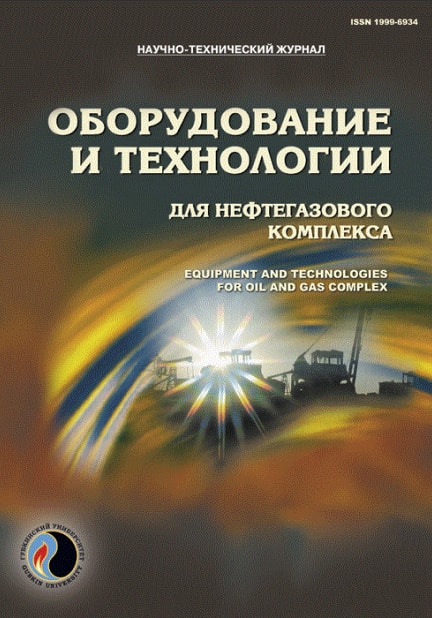Research of cavitation generators for the processes of vibration-wave cleavage of production wells
UDC: 622.276.6
DOI: 10.33285/1999-6934-2022-5(131)-15-19
Authors:
OMELYANYUK MAXIM V. 1
1,
PAKHLYAN IRINA A. 1
1
1 Kuban State Technological University, Krasnodar, Russia
Keywords: oscillatory effects, cavitation generators, flooded outflow, model, Navier – Stokes equation
Annotation:
New types of cavitation generators have been developed to increase the efficiency of production well treatments in order to increase their flow rate. The general regularities of flooded jet outflows from the Ventury-type nozzles for borehole conditions were revealed by analytical and numerical methods. Numerical modeling of multiphase flows passing by applying the finite element method was performed on the Star-CCM+ platform (Siemens PLM Software). The article describes the applied hydrodynamic calculation models, boundary conditions and the choice of solver parameters. A model was obtained that makes it possible to predict the difference in resistance at which cavitation occurs and the place of its occurrence. In the future, when conducting comprehensive researches, this information will be used to optimize the shape of cavitation generators, depending on the purpose of the technological process. The results obtained were verified by practical testing in natural conditions.
Bibliography:
1. Zaporozhets E.P., Zibert G.K., Zaporozhets E.E. Gidrodinamicheskaya kavitatsiya (svoystva, raschety, primenenie) // Obzor. inform. Ser. Podgotovka i pererabotka gaza i gazovogo kondensata. – M.: IRTs Gazprom, 2003. – 130 s.
2. Ibragimov L.Kh., Mishchenko I.T., Cheloyants D.K. Intensifikatsiya dobychi nefti. – M.: Nauka, 2000. – 414 s.
3. Matematicheskoe modelirovanie nelineynykh termogidrogazodinamicheskikh protsessov v mnogokomponentnykh struynykh techeniyakh / L.P. Kholpanov, E.P. Zaporozhets, G.K. Zibert, Yu.A. Kashchitskiy. – M.: Nauka, 1998. – 320 s.
4. Pilipenko V.V. K opredeleniyu chastot kolebaniy davleniya, sozdavaemykh kavitatsionnym generatorom // Dinamika nasosnykh sistem: sb. nauch. tr. – Kiev: Nauk. dumka, 1980. – S. 127–131.
5. Pilipenko V.V. K opredeleniyu amplitud kolebaniy davleniya, sozdavaemykh kavitatsionnym generatorom // Matematicheskie modeli rabochikh protsessov v gidropnevmosistemakh: sb. nauch. tr. – Kiev: Nauk. dumka, 1981. – S. 18–24.
6. Kuldeep R., Saharan V.K. Computational study of different venturi and orifice type hydrodynamic cavitating devices // J. of Hydrodynamics. – 2016. – Vol. 28, Issue 2. – P. 293–305. – DOI: 10.1016/S1001-6058(16)60631-5
7. Arabnejad M.H., Svennberg U., Bensow R.E. Numerical assessment of cavitation erosion risk using incompressible simulation of cavitating flows // Wear. – 2021. – Vol. 464–465. – DOI: 10.1016/j.wear.2020.203529
8. Experimental evaluation of numerical simulation of cavitating flow around hydrofoil / M. Dular, R. Bachert, B. Stoffel, B. Širok // European J. of Mechanics – B/Fluids. – 2005. – Vol. 24, Issue 4. – P. 522–538. – DOI: 10.1016/j.euromechflu.2004.10.004
9. Schnerr G.H., Sauer J. Physical and numerical modeling of unsteady cavitation dynamics // 4th Int. Conf. on Multiphase Flow, New Orleans, USA, May 27 – June 1 2001. – P. 1–12.
10. Reboud J.-L., Stutz B., Coutier O. Two-phase flow structure of cavitation: Experiment and modelling of unsteady effects // Third Int. Symposium on Cavitation. – 1998. – Vol. 1. – P. 203–208.

